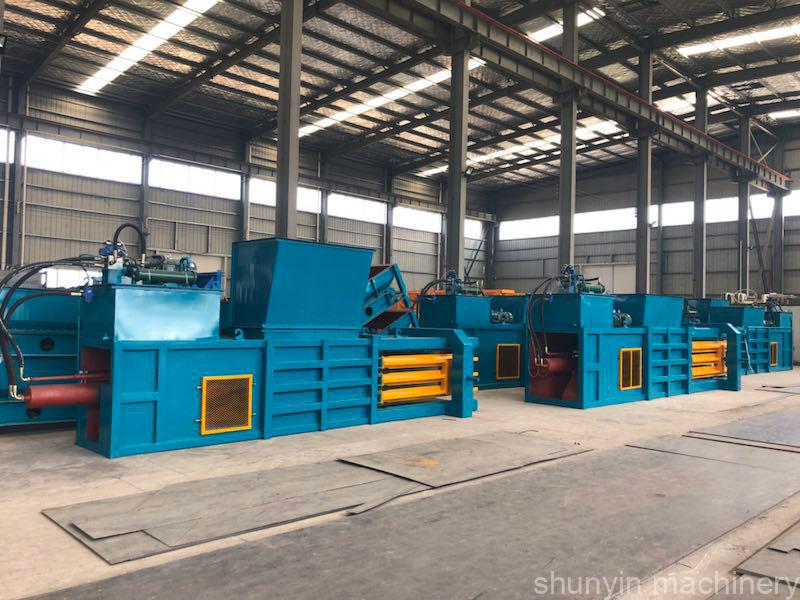Finding reliable and certified horizontal hydraulic balers suppliers can be daunting. Ensuring quality and certification is essential for efficient waste management.
Certified horizontal hydraulic baler suppliers are companies that meet industry standards and certifications, ensuring product quality and reliability. Leading suppliers include those with CE certification, ISO quality standards, and strong customer support, offering advanced machinery for waste management, recycling, and high-density baling applications.
I’ve navigated this process and discovered key factors that make a supplier stand out.
Who Makes Balers?
Understanding the manufacturers behind balers helps in selecting the right supplier for your needs.
Leading baler manufacturers include companies like Cram-a-Lot, Harris, Marathon Equipment, and UNTHA. These manufacturers specialize in producing high-quality horizontal and vertical balers for various industries, including waste management, recycling, and agriculture, offering solutions for efficient material compaction and storage.
I’ve worked with several brands and found that reputation and reliability are crucial.
Leading Manufacturers
Industry Leaders
Companies like Shunyin, Balemaster, and Marathon are renowned for their high-quality balers.
Innovative Features
Manufacturers incorporate advanced features such as automated control systems and customizable settings to enhance performance.
| Manufacturer | Key Features | Certification |
|---|---|---|
| Shunyin | Customizable options, robust build | ISO 9001, CE |
| Balemaster | Advanced automation, energy-efficient | ANSI, CE |
| Marathon | High-capacity models, user-friendly | ISO 14001, OSHA |
Choosing the Right Manufacturer
Selecting a manufacturer involves evaluating their product range, customer support, and adherence to certifications.
What Is the Difference Between a Bailer and a Baler?
Clarifying the distinction between bailers and balers ensures you choose the right equipment for your operations.
The key difference is in their function. A "bailer" is a device used for removing water from boats, while a "baler" is a machine used for compacting and binding materials like cardboard, plastic, or paper into bales for recycling or storage.
This difference can significantly impact your waste management efficiency.
Key Differences
Material Handling
Bailers are designed for smaller, specific materials, whereas balers can process various types, including cardboard, plastics, and metals.
Compression Ratio
Balers offer higher compression ratios, reducing waste volume more effectively than bailers.
Applications
Balers are ideal for large-scale operations like recycling centers, while bailers suit smaller businesses or specialized industries.
Who Can Operate a Baler?
Knowing who can operate a baler ensures safety and efficiency in your operations.
A baler can be operated by trained personnel, typically workers in recycling facilities, warehouses, or agricultural settings. Operators must understand safety protocols, equipment handling, and machine maintenance to ensure proper and safe operation, often after completing specialized training or certification in equipment operation.
I’ve found that with proper training, most staff members can handle balers effectively.
Required Skills and Training
Basic Training
Operators need to understand the baler’s functions, safety features, and maintenance procedures.
Safety Protocols
Training should cover the proper use of safety guards, emergency stops, and handling of compacted materials.
Certification and Compliance
Some regions may require operators to have specific certifications to ensure safe operation.
| Training Component | Description |
|---|---|
| Equipment Operation | Learning how to use the baler controls and settings |
| Safety Procedures | Understanding safety features and emergency protocols |
| Maintenance Basics | Basic upkeep to ensure longevity and performance |
Enhancing Operator Efficiency
Providing ongoing training and resources helps operators use balers more efficiently and safely.
What Is a Hydraulic Baler?
Understanding what a hydraulic baler is helps in making informed decisions about your waste management equipment.
A hydraulic baler is a machine that uses hydraulic force to compress materials like cardboard, paper, and plastic into compact bales. It’s commonly used in recycling and waste management to reduce material volume, improve storage efficiency, and prepare items for easier transportation and recycling.
This technology ensures consistent performance and reliable operation in various settings.
How Hydraulic Balers Work
Hydraulic System
The hydraulic system generates pressure to compress materials, making the baler effective for different waste types.
Compaction Process
Materials are fed into the baler chamber, where hydraulic rams compress them into dense bales for easy handling and transportation.
Advantages of Hydraulic Balers
| Advantage | Description |
|---|---|
| High Efficiency | Quickly compacts large volumes of waste |
| Versatility | Handles various materials like cardboard, plastics, and metals |
| Consistent Performance | Reliable operation with minimal downtime |
| Safety Features | Equipped with safety mechanisms to protect operators |
Applications in Various Industries
Hydraulic balers are used in manufacturing, recycling, and waste management industries to streamline operations and reduce costs.
Conclusion
Certified horizontal hydraulic balers suppliers provide reliable and high-quality solutions essential for efficient waste management.












